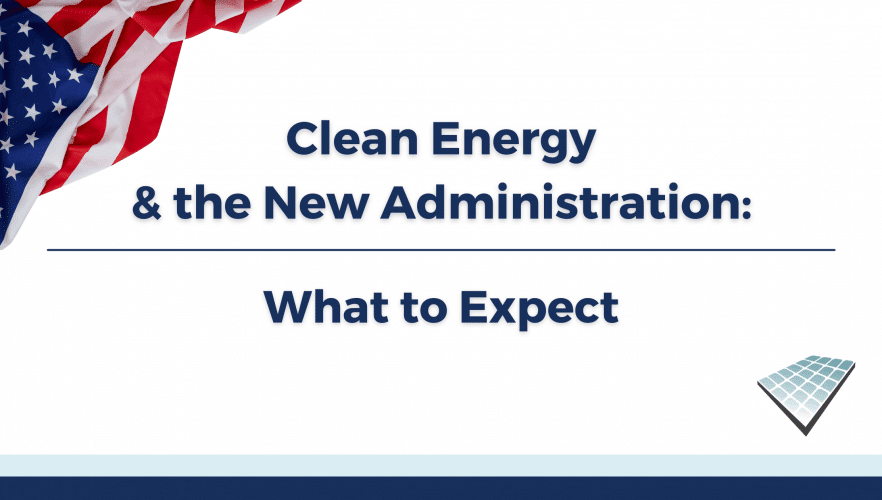
Clean Energy & the New Administration: What to Expect
This week, as the nation observes the inauguration of a new president, we take a look at what is on the horizon for clean energy and what that means for home and business owners alike.
With change in the air, you may be surprised with how much our leaders on both sides of the aisle agree when it comes to clean energy and its promise. From jobs and infrastructure to net-zero standards and lowering energy costs, it’s a sector that enjoys a high level of bipartisan support.
Without a doubt, our leaders at the national level have ambitious plans for the growing new energy economy. Like many state and local governments, new plans at the national level center around achieving economy-wide net-zero goals within a few short decades. In order to achieve these ambitious goals, the incoming administration plans to accelerate the development and deployment of clean technology like solar throughout the economy.
Following a strong finish in 2020, where does this transition leave the solar energy market, and how might the new administration approach this?
Solar energy tax credits
One method used by Congress and supported by multiple administrations to facilitate the adoption of clean energy has been via tax credits. The credit most notable to the solar industry is the Investment Tax Credit (ITC), also known as the federal solar tax credit.
Since its inception, the solar tax credit has been a considerable success, helping to bring the cost of solar energy down by over 80%. Originally passed under the Bush administration via the Energy Policy Act of 2005, the program has sustained bipartisan support. It was extended under both the Obama and Trump administrations and was renewed through 2022 in the December stimulus bill passed by Congress. In great news for home and business owners, the latest legislation increases the solar tax credit for 2021 from a planned 22% back up to 26%.
With the solar tax credit firmly in place through 2022, we expect the Biden Administration to focus on larger infrastructure and policy goals that can help meet the demand created, in part, by the solar ITC program.
Curious how the ITC works? Read our explanation here of how to take advantage of this generous federal incentive before it’s phased out.
What about the solar tariffs?
Another way the new administration can help meet increased demand is by reevaluating existing solar tariffs. The 30% tariffs were levied on solar imports to the United States, including imported solar cells and panels. Many believe that the elimination or reduction of these solar tariffs would greatly benefit the development of solar energy by easing supply chains and lowering surrounding costs within the industry.
The bottom line…
Given Congress’s renewal and recommitment to the Solar ITC in December, it is unlikely that further federal incentives will be immediately provided by new policy proposals. Rather we expect resources to shift to meet increasing demand.
Considering the current price of solar with the ITC extension, we believe there has never been a better time to make the investment in solar. As 2021 is positioned to be a landmark year for clean energy, the most important question is:
Are you ready to be a part of it?
Get in touch today to schedule your FREE consultation.

